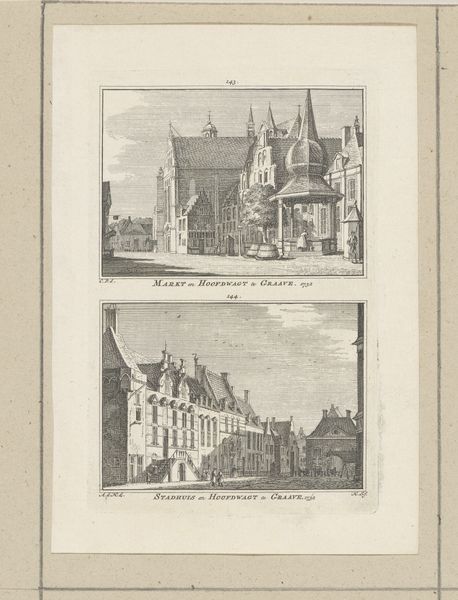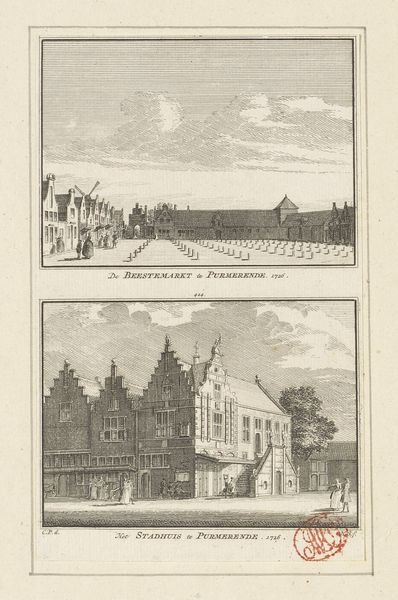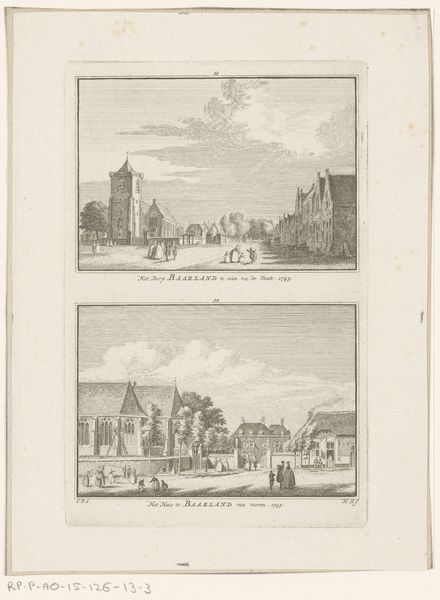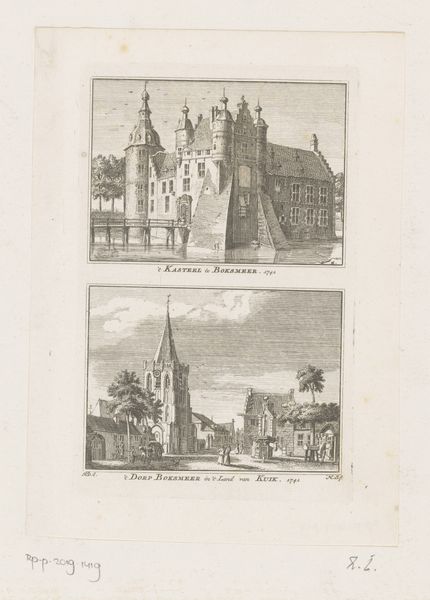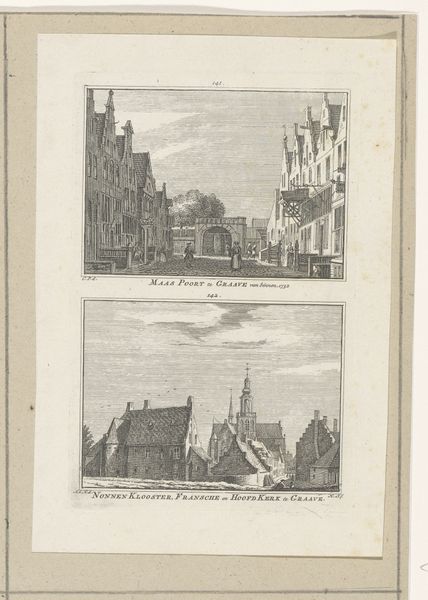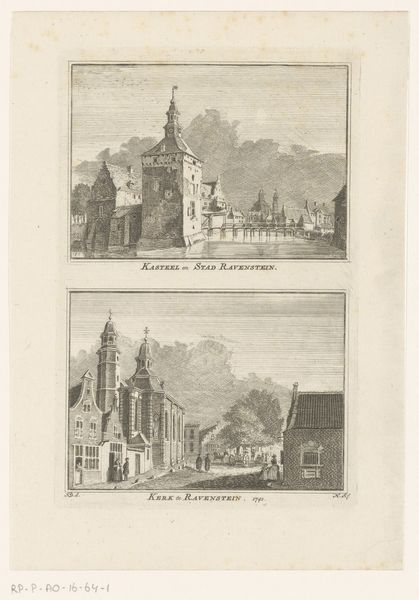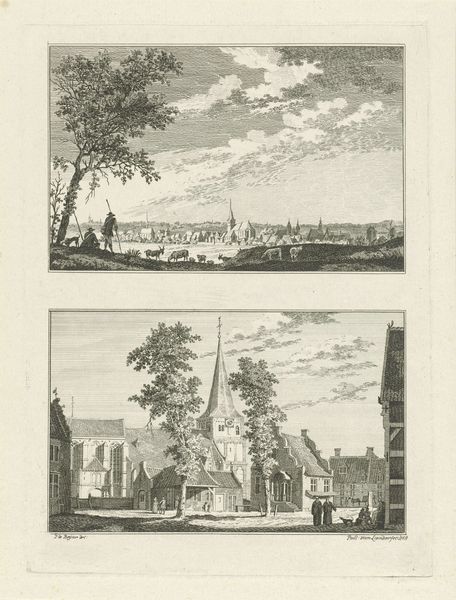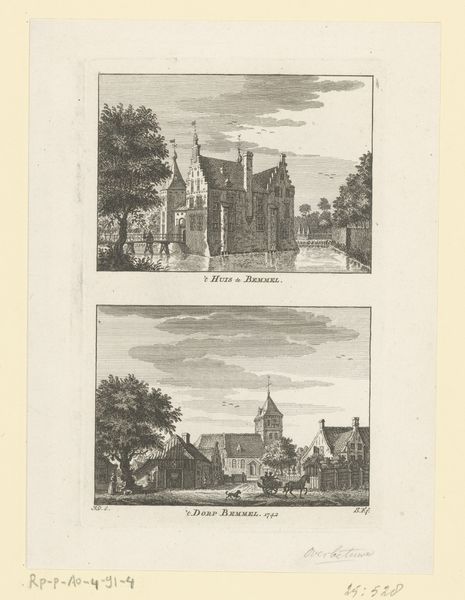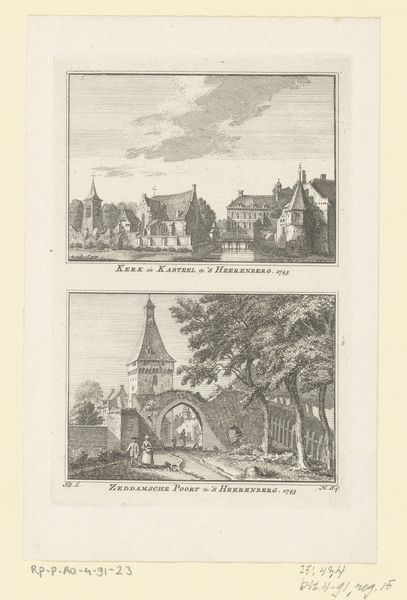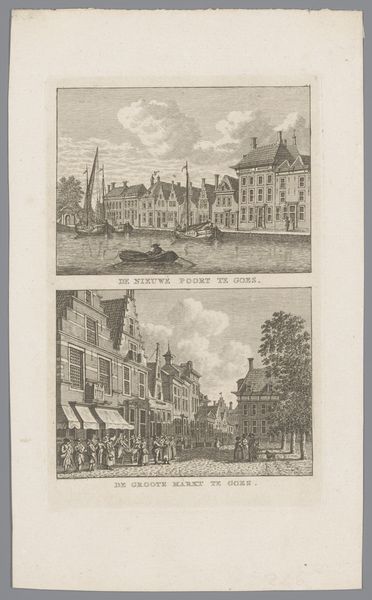
Gezicht op het stadhuis en gezicht op het Oost-Indisch Huis te Enkhuizen, 1729 1752 - 1792
0:00
0:00
hendrikspilman
Rijksmuseum
Dimensions: height 166 mm, width 109 mm
Copyright: Rijks Museum: Open Domain
Curator: Gazing upon Hendrik Spilman’s “Gezicht op het stadhuis en gezicht op het Oost-Indisch Huis te Enkhuizen, 1729,” created somewhere between 1752 and 1792… it hums with a peculiar stillness, wouldn’t you say? Editor: It's precise, clinical almost. Two architectural studies stacked one atop the other. I am most interested in the materiality of etching and engraving. Think of the artist laboriously coaxing those fine lines from the metal. It's a world away from the swift, gestural strokes we often celebrate. Curator: True. But consider the light—how it grazes the brickwork, each tiny scratch forming shadow. Spilman isn’t just rendering buildings, he's inviting us to wander, a tangible invitation of Dutch life. Do you ever feel, looking at scenes like these, you're breathing in history itself? Editor: The history that I'm breathing in smells distinctly of industry! I cannot disassociate the buildings from their function; town hall from governance, the East India House from global trade networks, the production of goods that fueled the economy. And consider that paper: so ubiquitous, but itself a commodity embedded in networks of resource extraction. Curator: You bring us crashing down to earth. Maybe that is for the best. I see your point, truly. The East India Company and the implications it has...I get lost in the pretty scenes and miss what lurks. Editor: I’d never suggest beauty should be ignored! Only that we remain aware of the labor and materials inherent in the art. Knowing more about how the materials reflect and reflect on labor, in turn, brings greater context to the landscapes themselves. Curator: So, instead of just seeing pretty buildings bathed in perfect light, we dig a little deeper into who built them, what they represent, and, maybe, unearth some of the less savoury truths. Editor: Precisely. It enriches our understanding. Next time you look at the perfect etching, perhaps remember the world that paid for that world captured. Curator: A valuable lens indeed. Thank you for tethering my flights of fancy to earth, for reminding me of the realities intertwined within even the most picturesque of vistas.
Comments
No comments
Be the first to comment and join the conversation on the ultimate creative platform.


